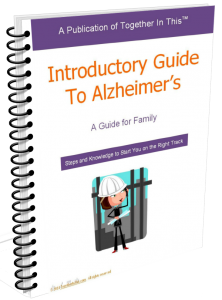![]()
Please be sure to like, comment, or share by clicking above ![]()
Or listen on the go:
Download the audio file by clicking the down arrow below:
Last week, in episode 1, I discussed how the Home may be Contributing to Undesirable Dementia Behaviors, and under minding your actions, and possibly speeding up the decline: Watch that episode Here.
This week I want to talk more specifically about the four elements of the home that you must focus on to reduce the need for anti-psychotics and other off-label medications.
Please understand I am not a doctor – I’m a researchers and I’m passing on what I’ve learned. You should be in regular contact with your loved one’s doctor, and it’s important to have a Geriatric Psychiatrist involved with medication review; you’ll understand when you listen to the last few minutes of this episode.
But you may be asking – why not use antipsychotics?
And in some instances, maybe you should be – but it’s up to you to be informed about the negative effects they may have.
So let’s explore that a little first.
Anti-psychotics are Off-label. When a drug is used for a disease it hasn’t been approved to treat, it is considered off-label.
Antipsychotics are a class of psychiatric medication primarily used to manage psychosis which is characterized as a disconnection from reality; in particular schizophrenia and bipolar disorder.
Antipsychotics, along with antidepressants, ADHD drugs, anti-anxiety medications, and mood stabilizers change brain function and results in alterations in perception, mood, or consciousness.
When prescribed for our loved ones, it’s generally for agitation, aggression, anxiety, sleeplessness, depression, hallucinations, and delusion.
This is because they have a calming and sedative effect.
This decreases the individual’s quality of life – they are no longer able to fully engage in activities or with other people.
Several studies suggest that more than 2/3 of all prescriptions are inappropriate.
And in 2005, the FDA stated that people with dementia who are on these medications have an increased risk of death 1.6 to 1.7 time greater than those on a placebo.
The list of potential side effects is extensive. Everyone one is different, however, so effects vary widely.
You goal should always be to use these drugs as last resort, for a minimal duration, and only after non-drug interventions have been tried.
Last week we touched on ways to improve the home to help reduce and even eliminate undesirable behaviors, and the need for off-label meds.
These behaviors which we often medicate for are very often triggered by the environment.
Every person and home environment is unique, and how a person interacts with their environment may change from moment to moment.
This complicates a situation which is already difficult.
People often ask me what they can do to the home to help reduce undesirable behaviors, so they can minimize, or completely avoid meds.
I tell them, You can’t change the person, so it’s easier to change their environment by focusing on 4 elements:
# Safety
# Function
# Stimulation
# Triggers
These four elements work together with the care partners (the person with dementia and their primary caregiver) to create the Alzheimer’s friendly home.
Safety promotes independence and individualism while helping family members have peace of mind.
Safety involves doing what you can to prevent issues and accidents from occurring.
You must address physical hazards which may cause them harm, behavioral issues from the disease which may put them in harms way,
Safety also, and very importantly, includes being prepared to respond in case they do become injured or ill.
Functionality empowers a person to complete tasks on their own or with minimal assistance.
Your goal is to create an environment which prolongs your loved one’s ability to perform activities of daily living such as home maintenance, preparing meals, bathing, dressing, etc.
Strategies that help create successful outcomes promotes their autonomy by increasing confidence, prolonging independence, and maintaining a sense of purpose.
You want to turn failures into successes.
Stimulation brings joy, lifts one’s spirit, and results in feelings of purpose and accomplishment.
Your goal using stimulation is to foster an enjoyable environment where your loved one stays mentally and physically active and engaged. And hopefully, the both of you smile more. ![]()
This improves everyone’s life, and helps reduce unwanted behaviors.
A stimulating environment should include activities they enjoy, want to do. These activities can be passive such as bird watching; or active such as dancing.
The environment should also create an opportunity for exercise and movement. It should provide sensory stimulation through smells, sounds, touch (tactile) and tastes.
Triggers result in unwanted behaviors.
Your goal regarding triggers is to learn how to identify the trigger, or triggers, which are negatively affecting your loved one’s behavior. We discussed this in more detail last week, so if you want you can view the video.
So your take away today should be to think about how you can improve your loved one’s environment by improving, and bringing into balance, the four elements.
This will help you reduce undesirable emotions and behaviors, and eliminate the need for medications.





Leave a Reply